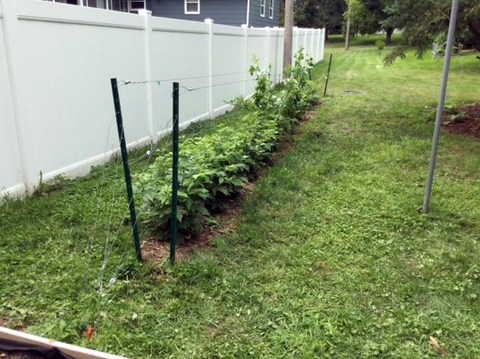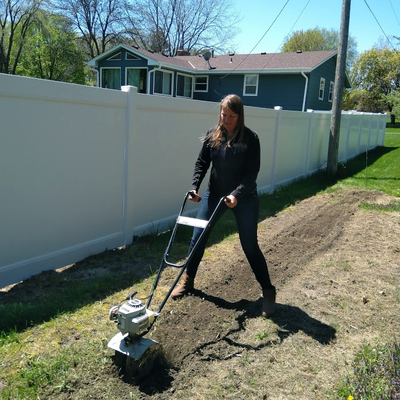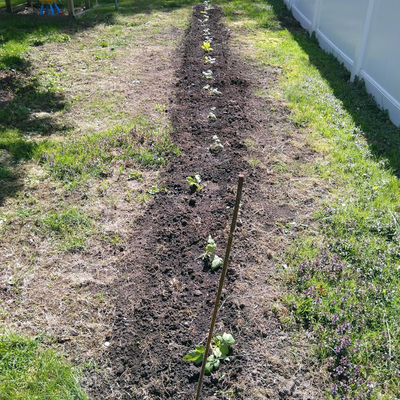Raspberries are a delightful fruit crop to grow in the home garden, community garden or urban farm. They are relatively easy to grow and maintain and they start producing fruit in the first or second year. They are even more delightful if properly trellised!
No matter what kind of trellis you design for your raspberries, the goal is simple: Keep the canes and fruit off the ground and leave enough walking space on each side for harvest.
A raspberry trellis should include sturdy support posts and several levels of wire or twine strung between the posts on either side of the plants.
If you use wire you will need a couple of other supplies: Earth anchors behind the end posts, and gripples or strainers. Both serve to secure the wire and keep it tight.
The advantage of using wire is that it will not loosen or wear out over time in the way that twine does. Twine takes less time and supplies to install, but it does not work as well as wire.
The video below describes how to plant a row of raspberries and build a simple wire trellis.
A step-by-step guide to plant and trellis your raspberries
Step 1: Prepare the soil
- Measure out and till the soil in a 2-foot strip where you will plant the berries.
- The tilled space should be 2 feet longer than the intended row length so that the plants on the ends will not be growing against compacted soil and turf.
- This step is especially important if the area was previously in turf, as the soil will be too compacted for gardening.
Step 2: Plant the raspberry plants
- Plant them 18 to 24 inches apart in moist soil.
- Water thoroughly after planting.
- Apply woodchip or straw mulch to help keep moisture in and weeds out.
Step 3: Install end posts and earth anchors
- Pound in two sturdy metal or wooden posts at the ends of the rows.
- If using metal posts, they should have holes down the length of them, for stringing the wire.
- The posts should be 5-6 feet long so that 1-2 feet are below ground and 4-5 feet are above ground.
- Twist the earth anchors in, one on each end of the row, 2-3 feet behind the end posts. They should be all the way into the ground so that just the top loop is exposed.
- You can use a metal pole or shovel handle to twist it in.
Step 4: Measure out and prepare the wire
- Using 12.5 gauge high tensile wire (or similar), roll it out along the row.
- Cut it at a length that is 2-3 feet longer than the length of the row.
- Cut two more pieces that are a little over 2 times the length of the space between the earth anchor length and the top of the post (you will be making a loop with this wire, to connect the anchor to the post).
- Use safety glasses and leather work gloves. The wire is high tension and may spring back when cut.
Step 5: Install anchor wires
- Starting on one end, loop one of the shorter wire pieces between the earth anchor and one of the end posts.
- The wire should loop through a hole near the top of the metal end post.
- Use a gripple and gripple tool to connect and tighten the loop (find gripples and instructions online).
Step 6: Repeat with each end post and anchor
Step 7: Install trellis wires along the row
- String the long pieces of wire along the length of the row, and into holes in the end posts at either end.
- Using gripples make small loops around the post with the wire.
- Use the gripple tool to tighten the wires so that when you shake them, they move very little.
Step 8: Repeat these steps with 2 to 3 more levels of wire.
The final levels should be approximately 2, 3, and 4 feet above the ground.








